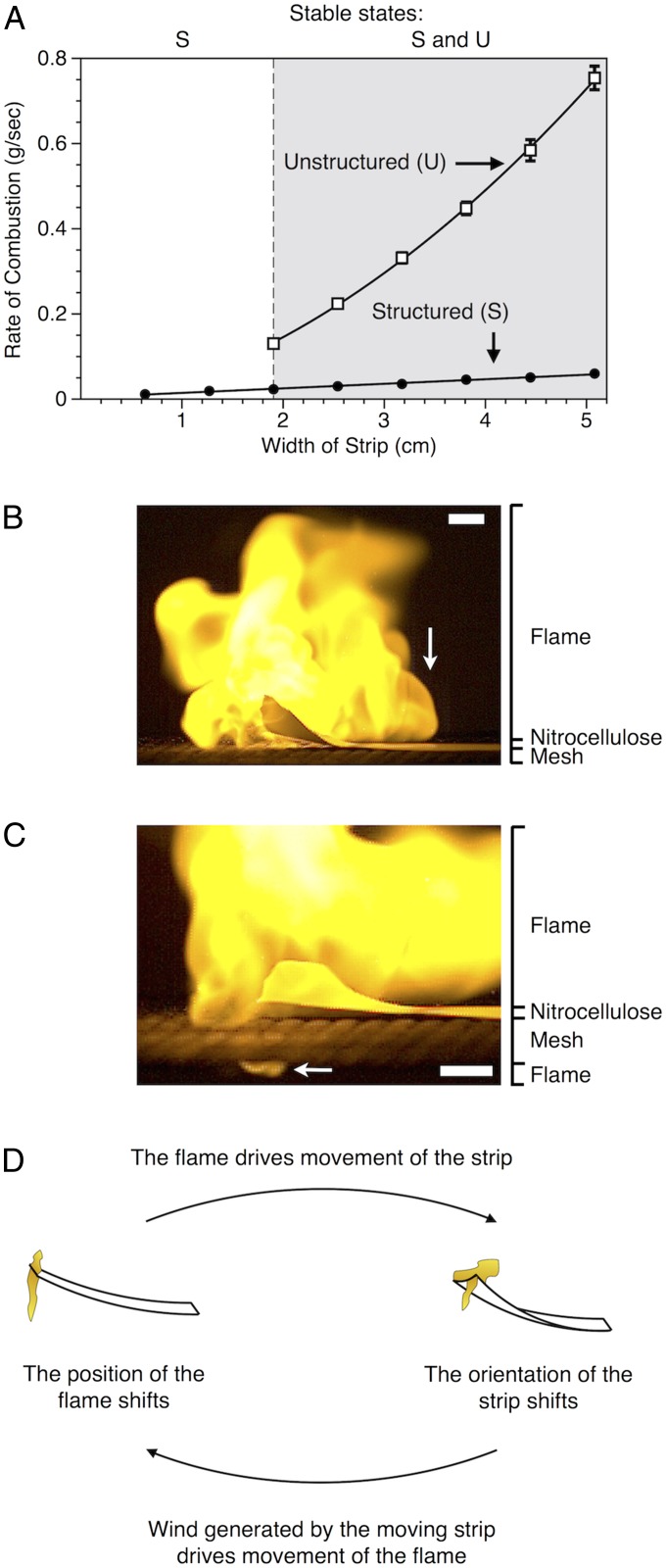Fig. 2.
Feedback in the unstructured regime. (A) Rates of combustion associated with structured (closed circle, ●) and unstructured (open square, □) burning regimes for strips of different widths; rates of combustion were 5–10 times higher for unstructured flames than for structured flames. Lines represent fits consistent with trends exhibited by points: structured (linear, r2 = 0.99), unstructured (quadratic, r2 = 1.00). Regions of stability for structured flames (S), and both structured and unstructured flames (S and U, gray) are labeled at the top of the plot. Error bars represent SE (n ≥ 5). (B) A high-speed image of an unstructured flame showing a forward burst of hot gases (white arrow) caused by a movement of the nitrocellulose strip (scale bar, 1 cm). (C) A high-speed image of an unstructured flame showing how ignition of the underside of the strip (white arrow) drives movements of the strip (scale bar, 1 cm). (D) A simplified representation of the feedback loop (wind–fire coupling) that stabilizes the unstructured regime. Flames drive movements of the strips and simultaneously shift their positions in response to wind generated by those movements; this feedback loop allows for the continuous generation of forward bursts of hot gases that, through convective heat transfer to the surface of the strips, sustain ignition of an area larger than that in the structured regime. In Movie S2, this feedback loop is captured in detail.

